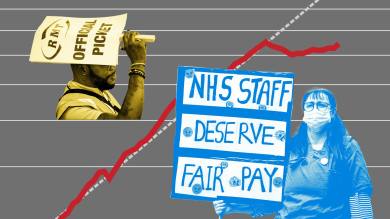Curfews and other restrictions on daily life aimed at curbing the virus' spread remain a reality for millions around the world.
Governments have been cautious about easing lockdown measures after the lifting of restrictions over the summer led to new waves of the virus. For many, optimism generated by rapid progress in the development has been partially offset by concerns over slow rollouts and their efficacy with new, highly transmissible variants of the virus.
This page provides an ongoing visual representation of the worldwide imposition and relaxation of lockdown measures. It uses the Covid-19 government response stringency index, a composite score developed by researchers at Oxford university, to compare countries’ policy responses to the coronavirus pandemic.
Latest changes
- October 27, 2021: Graphics now use the stringency index with version 3.7 of the index methodology.
- June 1, 2020: Graphics now use the stringency index with version 3.1 of the index methodology.
- May 5, 2020: Graphics updated to use a six-colour instead of five-colour scale to represent stringency index values.
- May 1, 2020: Map animation controls added. Graphics now use the stringency index with version 2.0 of the index methodology.
Help the Blavatnik School of Government at Oxford university improve the stringency index used in this map by providing direct feedback.
Stringency index: how it works
Every country’s lockdown is different. The wide range of measures adopted by different governments poses a challenge to analysts who want to compare these policies over time or between countries.
To enable such comparisons, a team at Oxford university’s Blavatnik School of Government is maintaining a database of pandemic-response policies and using it to derive an index of the measures’ overall stringency.
More than 100 volunteer academics and students collate publicly-available information on government response measures, across nine policy areas. These are assigned stringency ratings which are then used to derive a composite score between 0 and 100. Most other efforts to track the pandemic response take the form of lists of events without attempting to create comparable measures across countries.
The Oxford team is not currently collecting any sub-national data, meaning that the index does not perfectly capture local measures in large or federal countries. A measure only in force in one or two regions contributes less to the stringency index than a nationwide policy, but rules in force in only one or two regions can also inflate a whole country’s overall score.
Reporting, data analysis, design and development by Steven Bernard, David Blood, Cale Tilford, Max Harlow, Caroline Nevitt, Ændrew Rininsland, Alan Smith, Martin Stabe, Aleksandra Wisniewska.
An earlier version of the timeline heatmap graphic on this page represented dates where stringency index values were missing and those where the values were zero as equivalent. This has since been amended.







